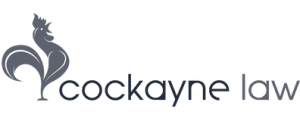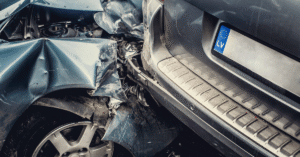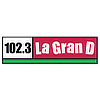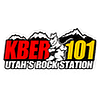Rear-End Collisions: Fault, Claims, and Compensation
The chances of being rear-ended while standing at a red light or trapped in slow traffic are high. You are not alone. In rear-end crashes, neck and back pain are common. Families are left with bills and stress. In Utah, your own PIP coverage pays the first medical costs, then you may step outside of no-fault if you meet certain injury rules.
As the process begins, it’s essential to take the right steps. A car accident legal representative in Utah is always available to help. He can handle evidence, deadlines, insurance calls, and fair compensation. In the meantime, you focus on healing.
Key Things You Should Know
- Rear driver is often at fault in Utah
- Fault can be split between both drivers
- Utah PIP pays first medical bills
- You can step outside no-fault after thresholds
- Keep photos, names, and medical records
- Do not skip medical follow-ups
- Claims have strict time limits
- Talking to insurers can affect value
How do you define a rear-end collision?
A rear-end accident occurs when a vehicle strikes the car ahead of it. A common cause is tailgating, inattentiveness, rear-end braking under stress, fatigue wear, and changes in velocity of the Autobahn streams. The body can whip forward and back even at low speed, causing soft tissue damage that might not be visible right away.
Always document the scene. Get photos of the bumper heights, skid marks, inside your car, child seats, and road signs. Save dashcam footage if available. See a doctor early, even if you feel “okay.”
Delayed symptoms are common after this type of crash, and early tests create a clear medical record. Keep a small journal of your pain, sleep, and missed work days. This simple log helps connect the crash to your day-to-day loss and can support your injury claim.
Fault in Rear-End Accidents In Utah
Safe following is your best defense against rear-ending another vehicle in Utah. When a driver follows too closely, they are usually at fault. That said, fault is not automatic. It can shift if the lead driver suddenly cuts in without space, stops for no reason, drives with broken brake lights, or reverses.
Utah also uses modified comparative negligence. Both drivers share blame for the accident, and their pay is reduced accordingly. If either driver is 50% at fault or more, they cannot recover money from the other party.
Evidence decides these calls, not guesses. Photos, damage points, witness notes, traffic cameras, and event data recorders can all show what truly happened. When in doubt, speak with a car accident attorney in Utah about preserving proof early.
Situations where the lead driver may share fault
There are limited situations where the lead driver’s actions matter. When driving in heavy traffic, drivers may cut across lanes, fail to signal lane changes, or stall without moving to the shoulder. Or have brake lights that do not work.
Each case is fact-specific. Even then, the rear driver must still show they acted with care. Comparative fault means your recovery can be reduced by your percentage, which is why documenting the scene and getting neutral witness statements can make a big difference.
Injuries and symptoms caused by rear-end collisions
Rear-end crashes often cause neck sprains, back strains, headaches, shoulder injuries, concussions, and knee or wrist injuries from bracing. Pain may start mild, then grow over the next 24 to 72 hours.
Do not wait on care. Early evaluation can catch hidden issues like disc injuries or a mild traumatic brain injury. If a child car seat is in the vehicle, check the seat maker’s guidance. Many advise replacing the seat after a crash. Keep all receipts for medications, braces, and travel to appointments.
These out-of-pocket costs belong in your claim. Tell your doctor about every symptom. Even small ones like brain fog or ringing in the ears, since these can connect to head or neck injuries. Follow your treatment plan. Avoid gaps that insurers may argue show you were not truly hurt.
Rear-end accident injury claims in Utah: first steps that help
Start with safety and health. If you need medical attention, call 911 at the spot. After that, move to a safe place and accept help. Details about licenses, insurance policies, and names should be exchanged. Take broad and close-up photos. Get contact details of witnesses before they leave.
Contact your insurer immediately, but do not guess about fault or injuries in that first call. Keep a folder with the claim number, adjuster name, repair estimates, and medical bills. Utah’s no-fault PIP will pay the first stack of medical expenses up to required limits, but keep in mind there are strict rules on when you can make a claim against the at-fault driver.
An experienced car accident lawyer Utah can coordinate records, protect your words in recorded statements, and watch deadlines for you.
Rear-end collision compensation and what affects settlement amounts
There is no fixed “average” settlement for a rear-end crash. Value depends on medical bills, future care, time off work, reduced earning capacity, property damage, and how the injury impacts your daily life. Utah’s no-fault system means your PIP pays first medical costs.
If your reasonable medical bills exceed the threshold or you suffer specific serious injuries, you can seek added money from the at-fault driver. Your percentage of fault matters.
A portion of your fault reduces your recovery, and if it is 50% or more, you cannot receive any compensation from the other driver. Settlements also reflect how clearly the evidence shows liability and the strength of your medical proof. Careful documentation and early legal guidance can turn a low offer into a fair one.
How PIP fits into the bigger picture
PIP can cover medical bills up to the statutory minimum, wage loss with weekly caps, household services for a limited time, and funeral benefits. These benefits apply regardless of fault and help you start care. Using PIP does not hurt your right to pursue the at-fault driver when you meet the threshold for stepping outside no-fault. Keep all PIP explanation of benefits forms, as they help track what has been paid and what remains to be claimed from the liability insurer.
Medical care, billing, and liens
After the ER visit, many people face therapy, imaging, pain management, or specialist consults. Keep every bill and note who paid. PIP may pay first, then health insurance, then the at-fault driver’s insurer. Treatment may be provided on a lien, which means they agree to be compensated from the settlement. Ask clinics to bill PIP first when possible. Track mileage to and from appointments, as Utah claims can include reasonable travel costs for medical care. If you lack a primary doctor, your legal team can often suggest local clinics with experience.
What not to skip?
Do not stop caring early without medical approval. Do not post about your injuries online. Do not sign blanket medical releases for the other insurer. These actions can harm your claim value.
Hire the Best Car Accident Attorney in Utah For Rear-End Crashes
Chris Cockayne and his team at Cockayne Law help people after rear-end crashes every week. After building strong files with photos, scene evidence, and medical assistance, they push for fair compensation from the right sources in the right order.
You’re kept informed, and your questions are answered in plain English. Also, you’re treated like your case matters, because it does. From handling PIP forms to dealing with adjusters and scheduling key expert reviews, they focus on the details that raise case value.
If talks stall, they are ready to file suit and keep moving. When your neck hurts and bills pile up, having steady help can make a real difference. If you want a straight path forward, talk with Chris and see how the plan would look for your case.
Conclusion
Accidents involving rear-ends are painful, frustrating, and confusing. Utah’s rules can help you get care and pay, but those rules also set limits and deadlines. Make health your first priority. Gather proof. Keep your records in one place.
Use PIP benefits, then seek more if you meet the thresholds for a third-party claim. Fault can be shared, and that changes value. Which is why good evidence matters. If you need beneficial guidance, Cockayne Law can review your facts, explain your options. They also help you aim for fair compensation without guesswork.
FAQs
Who is usually at fault in a Utah rear-end crash?
The rear driver is often at fault because Utah law requires a safe following distance. Still, fault can be split if the lead driver cut in, stopped without reason, or had broken brake lights. Evidence decides this, not assumptions, so save photos and witness names.
What does Utah PIP cover after a rear-end collision?
Utah requires personal injury protection that pays early medical bills up to the statutory minimum, plus limited wage loss and household services in many policies. PIP applies regardless of fault and helps you start care while liability is sorted out. Keep all bills and insurer letters for your file.
When can I step outside no-fault and claim against the other driver?
You can pursue the at-fault driver when your reasonable medical expenses exceed Utah’s threshold or you suffer specific serious injuries. Crossing the threshold lets you seek added damages like pain and suffering. Your documentation and medical records are key to showing that you qualify.
Will PIP raise my premiums if I use it?
PIP is part of your policy and is meant to be used after a crash, regardless of fault. Premium changes depend on many factors, including your insurer’s underwriting rules and your claim history. Using the benefits you already pay for is a normal part of the process.
What should I bring to a lawyer meeting about my rear-end crash?
Bring the police report number, photos, names and numbers for witnesses, medical records and bills, pay stubs showing missed work, and your insurance cards. A simple timeline of pain and care helps too. With these basics, a lawyer can quickly assess the next steps.









